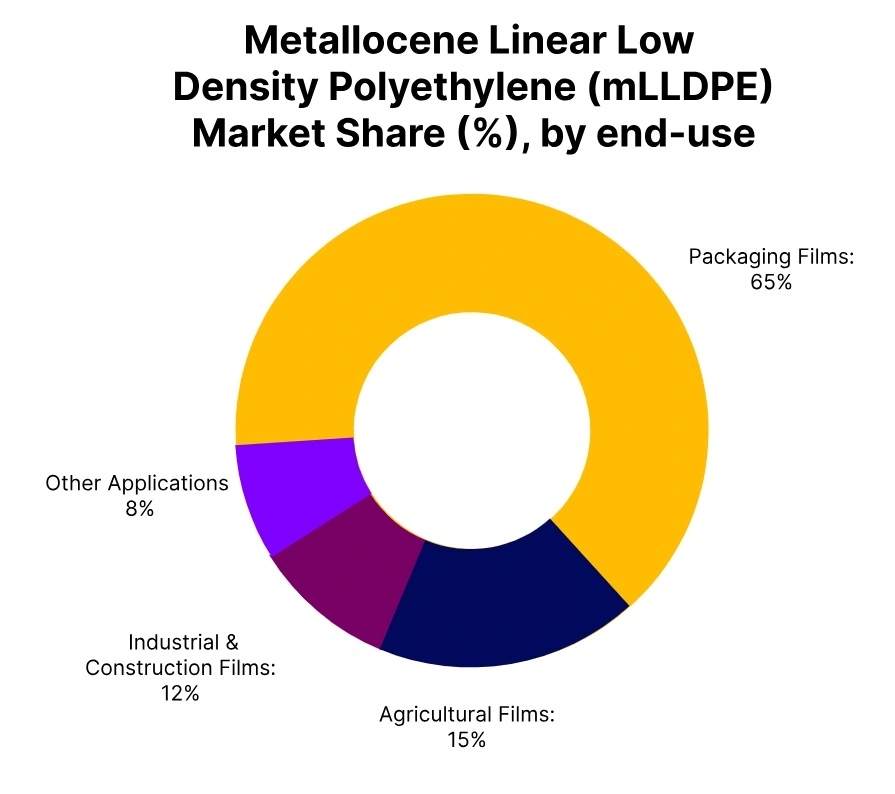Price-Watch’s most active coverage of Metallocene Linear Low Density Polyethylene (mLLDPE) price assessment:
- Film Grade C6 (MFI: 0.7- 1) FD Hamburg, Germany
- Film Grade C6 (MFI: 1) FOB Jurong, Singapore
- Film Grade C6 (MFI: 1) CIF Nhava Sheva (Singapore), India
- Film Grade C6 (MFI: 1) Ex-Vapi, India
- Film Grade C6 (MFI: 1) FOB Houston, USA
mLLDPE Price Trend Q3 2025
The global Metallocene Linear Low-Density Polyethylene (mLLDPE) price trends in Q3 2025 exhibited moderate stability, with a marginal 1–2% market variation across major regions. In the APAC region, key countries such as China, India, and South Korea recorded steady to slightly firm demand from the packaging, film, and consumer goods sectors, driven by consistent downstream activity and moderate feedstock costs.
North America witnessed a stable pricing environment, supported by balanced supply levels and steady demand from the flexible packaging segment. In Europe, mLLDPE prices remained largely steady, with limited fluctuations amid adequate inventories and cautious buying sentiment due to softer downstream consumption.
Overall, the global mLLDPE market demonstrated resilience, with regional supply–demand dynamics, feedstock ethylene trends, and manufacturing activity continuing to shape market sentiment throughout the quarter.
Germany
mLLDPE Domestically Traded prices FD Hamburg, Germany, Grade Film Grade C6 (MFI: 0.7-1).
In Germany, mLLDPE domestically traded prices have witnessed a decline of -3.6% in Q3 2025, with prices having ranged between USD 1320-1340 per metric ton. The mLLDPE price trend in Germany has mainly been driven by reduced demand from key sectors like packaging and industrial films. As procurement activity has been remaining lower than expected, the m LLDPE price trend in Germany has continued its downward movement throughout the quarter.
Supply has been stable, but the lack of a significant uptick in demand has been resulting in pressure on prices. The mLLDPE price trend in Germany has reflected broader European market challenges, where economic uncertainty and a slowdown in industrial activity have been keeping prices lower than anticipated.
In September 2025, mLLDPE prices in Germany have increased by 1.10%, inching upward on the back of improved buying sentiment and marginal recovery in downstream packaging demand. Support from firm Crude Oil and Naphtha prices has elevated Ethylene costs, which in turn has lifted mLLDPE production costs.
Singapore
mLLDPE Export prices FOB Jurong, Singapore, Grade Film Grade C6 (MFI: 1).
In Singapore, mLLDPE export prices have been declining by -1.1% in Q3 2025, following a moderate price trend. The mLLDPE price trend in Singapore has been influenced by steady but unspectacular demand from regional markets. While global demand has remained relatively soft, the mLLDPE price trend in Singapore has largely been stable with minor downward shifts.
The relatively lower price change in Singapore compared to other regions has indicated that the market has not been facing as severe a demand slowdown, though pricing pressure has still been evident. Despite stable supply, the mLLDPE price trend has reflected the ongoing softness in the global packaging and consumer goods sectors.
In September 2025, prices have decreased by 2.48%, weakening amid subdued regional demand and abundant product availability in Southeast Asia. Softer Ethylene feedstock values and competitive offers from the Middle East and China have been prompting Singaporean producers to lower export quotations. Converters have been operating at reduced rates due to sluggish end-user consumption in film packaging applications.
India
mLLDPE Domestically Traded prices Ex-Vapi, India, Grade Film Grade C6 (MFI: 1).
According to the PriceWatch, in India, mLLDPE domestically traded prices have decreased by -3.2% in Q3 2025. The mLLDPE price trend in India has been driven by lower demand from packaging industries and a general slowdown in consumer spending. The mLLDPE price trend in India has reflected weaker domestic industrial activity, which has been keeping prices under downward pressure.
Although supply has remained relatively steady, the mLLDPE price trend has shown that demand has not been sufficient to support price stability. Economic uncertainties have also been playing a role, leading to a more cautious approach to procurement. The mLLDPE price trend in India has continued mirroring broader market trends across the region, where economic factors have been limiting price increases.
In September 2025, mLLDPE prices in India have decreased by 1.59%, as import prices have been edging lower amid steady inflows from Singapore and China coupled with moderate domestic consumption. Weak regional offers, combined with lower freight rates, have been making imported cargoes more competitive.
USA
mLLDPE Export prices FOB Houston, USA, Grade Film Grade C6 (MFI: 1).
According to the PriceWatch, in the USA, mLLDPE export prices have dropped by -2.6% in Q3 2025. The mLLDPE price trend in the USA has been shaped by reduced demand in key sectors, particularly from packaging industries. As economic uncertainties have been continuing to weigh on industrial output, the mLLDPE price trend has shown a downward movement across the quarter.
Despite stable supply, weaker procurement from global markets has been resulting in price reductions. The mLLDPE price trend in the USA has been consistent with broader trends seen in other regions, as global economic conditions and slower industrial activity have been creating a more cautious market environment.
As a result, prices have been continuing to fall moderately, reflecting the ongoing weak demand from key industries. In September 2025, mLLDPE prices in the US have decreased by 2.34%. The US market has been experiencing price weakness as higher inventory levels have coincided with slower domestic film and packaging demand. Ample resin availability, alongside easing export inquiries from Latin America and Asia, has been weighing on overall sentiment.


